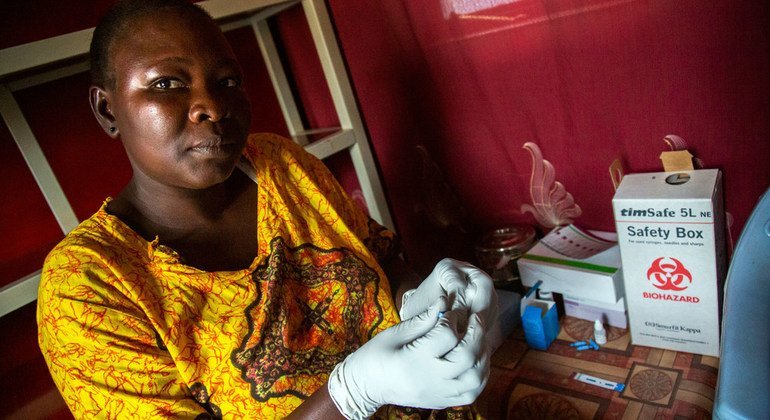A 3D-printed hand-powered centrifuge for molecular biology
PLoS biologyGaurav Byagathvalli, Aaron Pomerantz, Soham Sinha, Janet Standeven, M Saad Bhamla
2019
The centrifuge is an essential tool for many aspects of research and medical diagnostics. However, conventional centrifuges are often inaccessible outside of standard laboratory settings, such as remote field sites, because they require a constant external power source and can be prohibitively costly in resource-limited settings and Science, technology, engineering, and mathematics (STEM)-focused programs. Here we present the 3D-Fuge, a 3D-printed hand-powered centrifuge, as a novel alternative to standard benchtop centrifuges. Based on the design principles of a paper-based centrifuge, this 3D-printed instrument increases the volume capacity to 2 mL and can reach hand-powered centrifugation speeds up to 6,000 rpm. The 3D-Fuge devices presented here are capable of centrifugation of a wide variety of different solutions such as spinning down samples for biomarker applications and performing nucleotide extractions as part of a portable molecular lab setup. We introduce the design and proof-of-principle trials that demonstrate the utility of low-cost 3D-printed centrifuges for use in remote field biology and educational settings.
View more
Hand-powered ultralow-cost paper centrifuge
Nature Biomedical EngineeringM Saad Bhamla, Brandon Benson, Chew Chai, Georgios Katsikis, Aanchal Johri, Manu Prakash
2017
In a global-health context, commercial centrifuges are expensive, bulky and electricity-powered, and thus constitute a critical bottleneck in the development of decentralized, battery-free point-of-care diagnostic devices. Here, we report an ultralow-cost (20 cents), lightweight (2 g), human-powered paper centrifuge (which we name ‘paperfuge’) designed on the basis of a theoretical model inspired by the fundamental mechanics of an ancient whirligig (or buzzer toy; 3,300 BC). The paperfuge achieves speeds of 125,000 r.p.m. (and equivalent centrifugal forces of 30,000 g), with theoretical limits predicting 1,000,000 r.p.m. We demonstrate that the paperfuge can separate pure plasma from whole blood in less than 1.5 min, and isolate malaria parasites in 15 min. We also show that paperfuge-like centrifugal microfluidic devices can be made of polydimethylsiloxane, plastic and 3D-printed polymeric materials. Ultracheap, power-free centrifuges should open up opportunities for point-of-care diagnostics in resource-poor settings and for applications in science education and field ecology.
View more
Lung surfactants and different contributions to thin film stability
Soft MatterEline Hermans, M Saad Bhamla, Peter Kao, Gerald G Fuller, Jan Vermant
2015
The surfactant lining the walls of the alveoli in the lungs increases pulmonary compliance and prevents collapse of the lung at the end of expiration. In premature born infants, surfactant deficiency causes problems, and lung surfactant replacements are instilled to facilitate breathing. These pulmonary surfactants, which form complex structured fluid–fluid interfaces, need to spread with great efficiency and once in the alveolus they have to form a thin stable film. In the present work, we investigate the mechanisms affecting the stability of surfactant-laden thin films during spreading, using drainage flows from a hemispherical dome. Three commercial lung surfactant replacements Survanta, Curosurf and Infasurf, along with the phospholipid dipalmitoylphosphatidylcholine (DPPC), are used. The surface of the dome can be covered with human alveolar epithelial cells and experiments are conducted at the physiological temperature. Drainage is slowed down due to the presence of all the different lung surfactant replacements and therefore the thin films show enhanced stability. However, a scaling analysis combined with visualization experiments demonstrates that different mechanisms are involved. For Curosurf and Infasurf, Marangoni stresses are essential to impart stability and interfacial shear rheology does not play a role, in agreement with what is observed for simple surfactants. Survanta, which was historically the first natural surfactant used, is rheologically active. For DPPC the dilatational properties play a role. Understanding these different modes of stabilization for natural surfactants can benefit the design of effective synthetic surfactant replacements for treating infant and adult respiratory disorders.
View more
Influence of interfacial rheology on drainage from curved surfaces
Soft MatterM Saad Bhamla, Caroline E Giacomin, Caroline Balemans, Gerald G Fuller
2014
Thin lubrication flows accompanying drainage from curved surfaces surround us (e.g., the drainage of the tear film on our eyes). These draining aqueous layers are normally covered with surface-active molecules that render the free surface viscoelastic. The non-Newtonian character of these surfaces fundamentally alters the dynamics of drainage. We show that increased film stability during drainage can occur as a consequence of enhanced surface rheology. Increasing the surfactant layer viscosity decreases the rate of drainage; however, this retarding influence is most pronounced when the insoluble surfactant layer has significant elasticity. We also present a simple theoretical model that offers qualitative support to our experimental findings.
View more
Autonomous motility of active filaments due to spontaneous flow-symmetry breaking
Physical Review LettersGayathri Jayaraman, Sanoop Ramachandran, Somdeb Ghose, Abhrajit Laskar, M Saad Bhamla, PB Sunil Kumar, R Adhikari
2012
We simulate the nonlocal Stokesian hydrodynamics of an elastic filament which is active due a permanent distribution of stresslets along its contour. A bending instability of an initially straight filament spontaneously breaks flow symmetry and leads to autonomous filament motion which, depending on conformational symmetry, can be translational or rotational. At high ratios of activity to elasticity, the linear instability develops into nonlinear fluctuating states with large amplitude deformations. The dynamics of these states can be qualitatively understood as a superposition of translational and rotational motion associated with filament conformational modes of opposite symmetry. Our results can be tested in molecular-motor filament mixtures, synthetic chains of autocatalytic particles, or other linearly connected systems where chemical energy is converted to mechanical energy in a fluid environment.
View more








